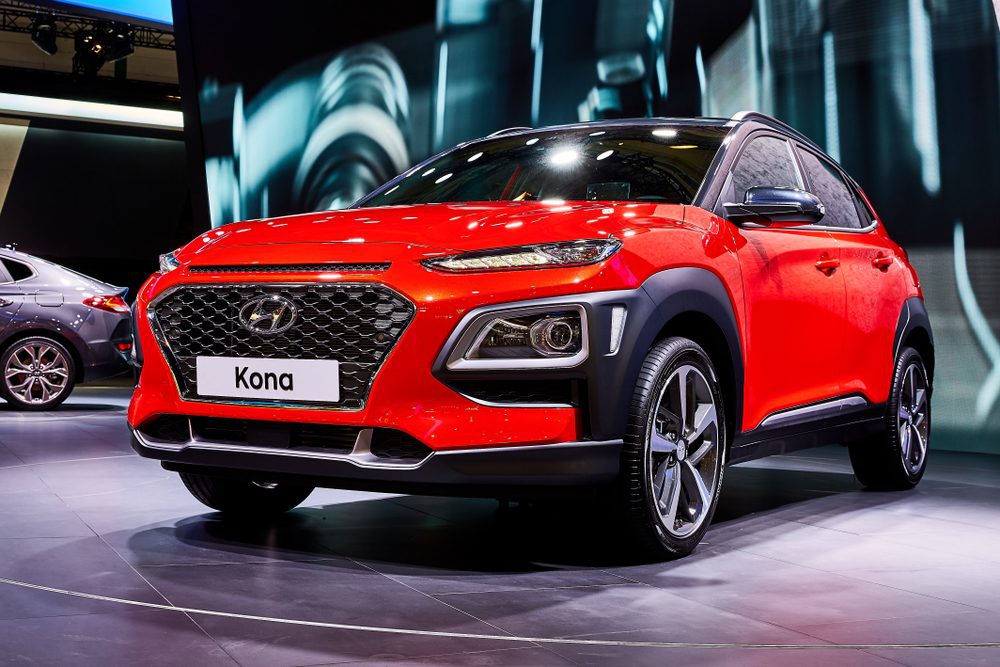Most people imagine a Toyota Prius when they think of an “eco-friendly vehicle” but the history of electric cars actually spans back to the 1800s when chemist William Morrison created one that was able to go up to a whopping 14 miles per hour. Since then, the interest in electric cars has wavered due to factors such as gas prices and the economy; however, Hyundai is trying to make a strong statement in the battery electric vehicle (BEV) market with its Kona Electric model.
In April of 2018, Bill Howard of ExtremeTech reported that “In America, Crossovers Are Hot, Sedans Are Not.” Simply stated, consumers have become more interested in crossovers for a myriad of reasons. Many consumers who steer clear of BEVs state that they aren’t interested in them due to the lack of “attractive” and “trendy” models, but vehicle manufacturers know that crossover vehicles are in high demand and they have an opportunity to make money off of an electric one. Hyundai has taken note of this and plans on releasing the Hyundai Kona Electric later this year.
Even though it is expected to have a much more cost-friendly price tag than many other electric vehicles, WardsAuto reports the Kona has a longer range than all other BEVs on the market other than Tesla models. The Kona’s 64kWh battery can reportedly go 258 miles (415 km) after a full charge, which, according to Jonathan Gitlin of Ars Technica, takes under an hour with the latest Level 3 DC chargers. A Level 2 (240V) charger will take the battery from 0% to 80% in about nine and a half hours.
Jimmy Hazim of Gadget Advisor indicated that the Kona comes with 201 horsepower and 290 pound-feet of torque, making sure you can get smooth and quick acceleration. Hazim also noted that Hyundai claims the BEV goes from zero to 60 miles per hour in just 7.6 seconds. Drivers can also change the motor drag from zero to three seamlessly with regenerative braking paddles.
Hyundai switched it up a bit with the Kona, opting for a larger, liquid-cooled battery pack instead of its Ioniq model’s air-cooled 23 kWh pack. Unlike most of the interior that is plastic, structures made of steel and aluminum protect the battery and improve safety.
A major reason consumers shy away from battery electric vehicles is the way they look. Many consumers feel they look too small, ugly, and uncomfortable. Even though the Kona is much smaller than the typical CUV, it looks more “normal” to car buyers and is thus more appealing. It is also packed with features and specs including Android Auto, Apple CarPlay, Hyundai’s infotainment system, collision warnings, and lane departure notifications, and cruise control.
Hyundai also offers more expensive trims that include other specs like wireless phone charging, ventilated front seats, pedestrian detection, and more. According to another Ars Technica article, the most feature-packed model, the Ultimate, comes with “all the toys,” including “an eight-inch color touchscreen to control everything from in-car entertainment to climate to navigation.”
Available colors include white, silver, gray, blue, lime green, red, and black. Possibly the most visible, prominent difference between the Kona EV and other Hyundai vehicles is the front grille, which is solid. Also, there is no need to worry about parking on the wrong side of the charger, as the charging port is right in the middle of the grille. The SE model will likely start at an attractive $19,500 and the Ultimate is expected to cost $27,400.
WardsAuto indicates Hyundai has not released sales potential or expectations for the Kona, but with proper production, distribution, and marketing, experts feel it may just end up being a serious competitor of Tesla’s Model 3.








